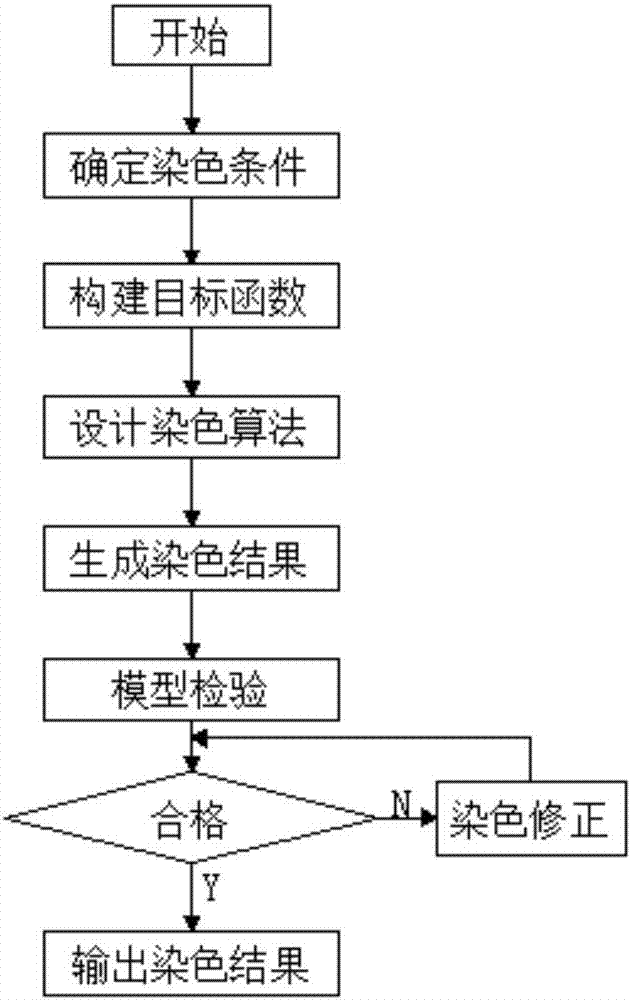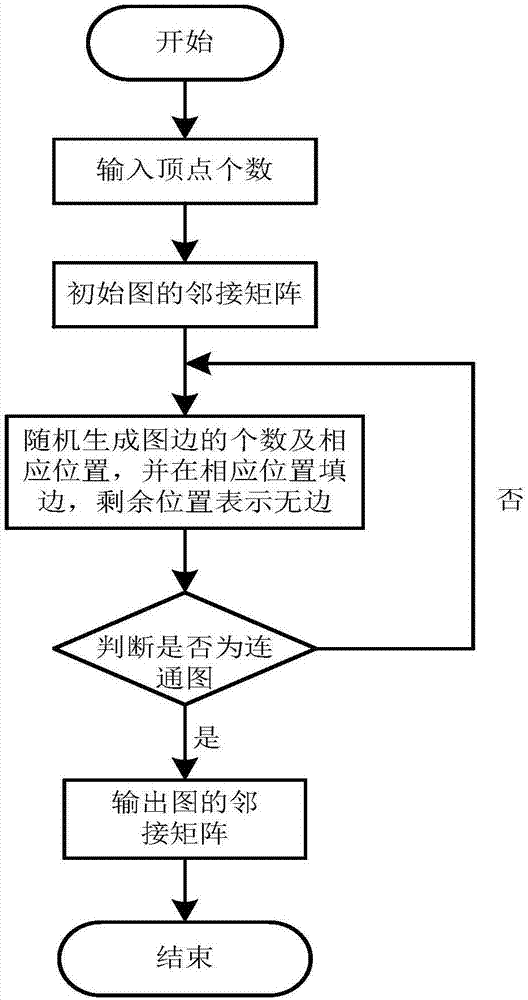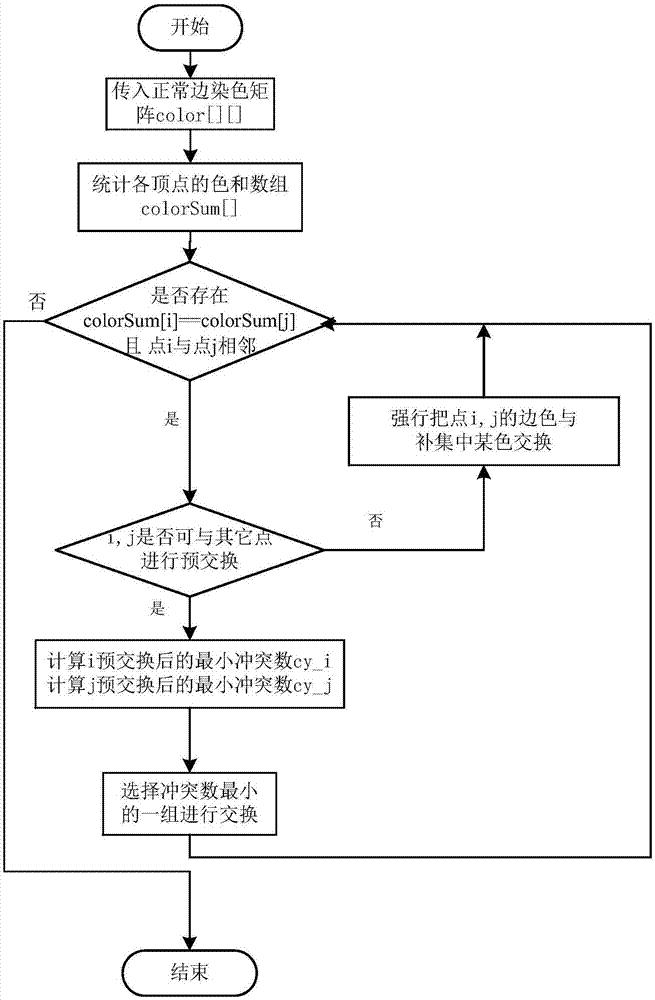Random graph neighboring point and distinguishable edge coloring algorithm
An algorithm and neighboring point technology, applied in the field of graph coloring, can solve the problem of multi-constraint distinguishable coloring and no solution.
- Summary
- Abstract
- Description
- Claims
- Application Information
AI Technical Summary
Problems solved by technology
Method used
Image
Examples
Embodiment
[0085] A neighbor and distinguishable edge coloring algorithm for random graphs, including a storage medium,
[0086] The storage medium includes a program for defining data structures, procedure steps for constructing an objective function, and a coloring algorithm; firstly, the coloring constraints are determined, and then each sub-objective function and a decision function are abstracted, thereby forming a decision equation and an overall objective function, and finally The algorithm and dyeing results are given; the flow chart of the dyeing method is as follows figure 1 shown.
[0087] The program to define the data structure is:
[0088] ⑴int degree[2][n+1]
[0089] The array degree is a two-dimensional array with two rows (i+1) columns, which are used to save the vertices and numbers of different degrees in the graph G arranged from large to small, where i is the number of all degrees that appear in the graph , degree[1][i] represents the number of i-degree points in ...
PUM
 Login to View More
Login to View More Abstract
Description
Claims
Application Information
 Login to View More
Login to View More - R&D
- Intellectual Property
- Life Sciences
- Materials
- Tech Scout
- Unparalleled Data Quality
- Higher Quality Content
- 60% Fewer Hallucinations
Browse by: Latest US Patents, China's latest patents, Technical Efficacy Thesaurus, Application Domain, Technology Topic, Popular Technical Reports.
© 2025 PatSnap. All rights reserved.Legal|Privacy policy|Modern Slavery Act Transparency Statement|Sitemap|About US| Contact US: help@patsnap.com



